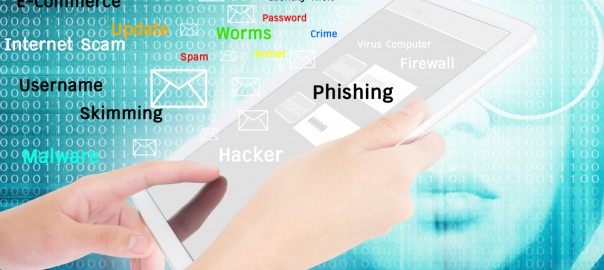
9 Tips For Dealing With Identity Theft
Identity theft is the term for what happens when a third party obtains your personal data and information that allows them to pose as you online. Typically, identity thieves apply for lines of credit or access your financial accounts and other sensitive information to steal as much of your money or open as many lines of credit as they can and leave you on the hook for their fraudulent activity.
Your personal data can be compromised if a financial institution is breached by hackers seeking to obtain usable identity information, and by the time breaches are discovered it may already be too late to save your credit. The good news is there are steps you can take to prevent yourself from being victimized by identity thieves. Here are 9 quick tips to protect yourself from identity theft.
1. Beware Shoulder Surfers in Public Places
At the ATM, on your phone, or even at your computer, people are on the lookout to steal personal information like passwords or PIN numbers by watching you enter them on a keypad or mobile device. Use biometric (fingerprint, facial recognition) security on your smartphone or mobile device to authorize apps that access your personal or financial data. Identity thieves often start looking for vulnerable or inattentive people in public places when choosing likely targets, so protect your information and keep your screen and keypad private.
2. Require Photo ID Verification
Don’t sign your credit cards. Write “CID” or “Ask for ID” on the signature line. It’s a small measure, but it can make all the difference in identity theft prevention if you don’t know your credit card has been stolen and someone is attempting to use it.
3. Wipe Out Old Data Storage
Selling or trading your old laptop, smartphone, or tablet? Wipe your data storage clean with an app like ShredXP to ensure that all sectors on the drive are set to 1 or 0, rendering any personal data whatsoever illegible. Identity thieves will often connect old hard drives taken from used computers to search for recoverable personal or financial information that has not been “digitally shredded”.
Additionally, if you keep financial data on physical media like CDs, DVDs or magnetic tape backups, make sure you destroy them completely. There are specialized shredders that are designed to destroy optical storage media like CDs and DVDs as well.
4. Monitor Bank and Credit Card Statements Regularly
Check those charges and debits on your accounts. Someone may have access to your account and you may never know it until the charges start showing up. You have a limited time to dispute charges as fraudulent, so checking monthly is vital to preventing identity theft and maintaining your credit.
5. Shred Everything
Put anything with financial data on it in a crosscut paper shredder and don’t bag it up separately from regular trash. More identity thieves than you’d think go “dumpster diving” to find critical financial and personal information.
6. Encrypt Your Email and Messaging
Using end to end encryption ensures all messages you send or receive via email are invisible to any third party, up to and including government agency efforts to read your email and messaging. Hackers can’t access the contents of your email unless they somehow manage to get ahold of your private encryption key. It is an extremely effective means of preventing identity theft, and it takes minutes to configure.
7. Check Your Credit Annually
Everyone gets a free credit report once a year from the Big Three credit reporting agencies (Equifax, Experian, and Transunion). Go over your credit report and verify that what’s on the report matches your records and accounts. If some unknown lines of credit or creditors show up, you may already be a victim of identity theft.
8. Always Use 2-Factor Authentication
This is a critical security measure to prevent identity theft via financial and social media sites and apps. 2-factor authentication sends a text or email to an account or number you have entered on the site every time you login from an unfamiliar location, device, or computer. If you are actually logging in, you can approve that login from your device. If not, you are now aware that your account is under attack and can shut that attacker out.
9. Keep Your Social Security Number Secure
As the defacto national ID number for millions of Americans, access to this number should be protected at all costs. Do not carry your Social Security card on your person, but keep it in a safe place where it isn’t susceptible to damage or decay. Any identity thief with your full name, home address, and even the last 4 digits of your SSN can assume your identity online and wreak havoc on your financial life.
Never use your SSN as part of a username or password either, and never give the full number via telephone or in reply to an email. If you must enter your social security number online (for example, when filing taxes or applying for financing), check to make sure the connection and site are secure by the lock symbol in the browser bar and “https://” at the beginning of the web address.
In summary, do what you can to protect yourself from identity theft, and be smart about how you protect and preserve your personal data. Use these tips to keep yourself from becoming “low-hanging fruit” for identity thieves, and remember to always protect your personal data when online and in the real world.
Have you been affected by Identity Fraud? How did you handle it? Comment below, we would love to hear your thoughts and any tips that helped you get through what can be a stressful time.

 Previous Post
Previous Post Next Post
Next Post